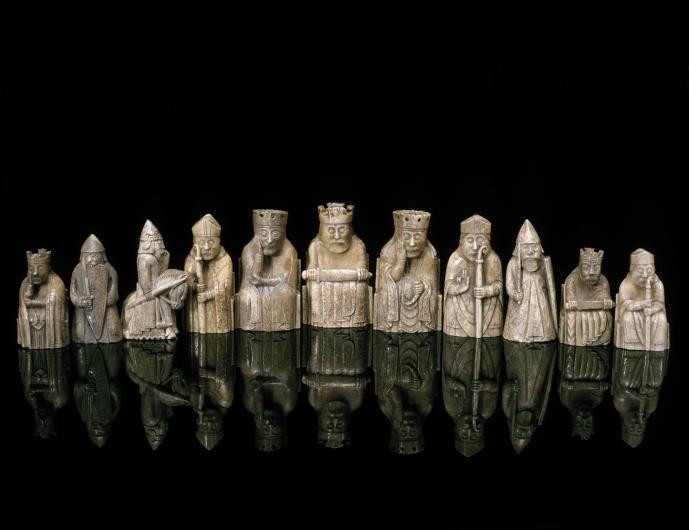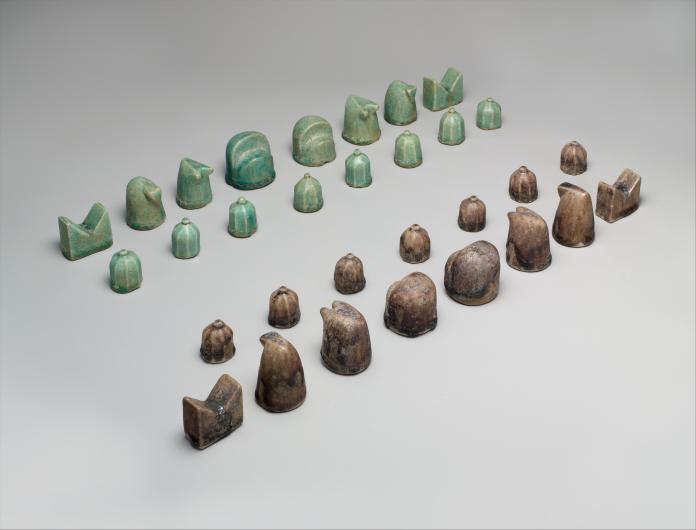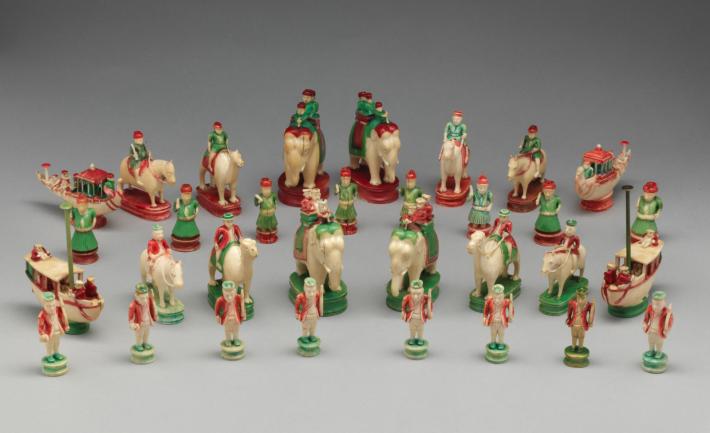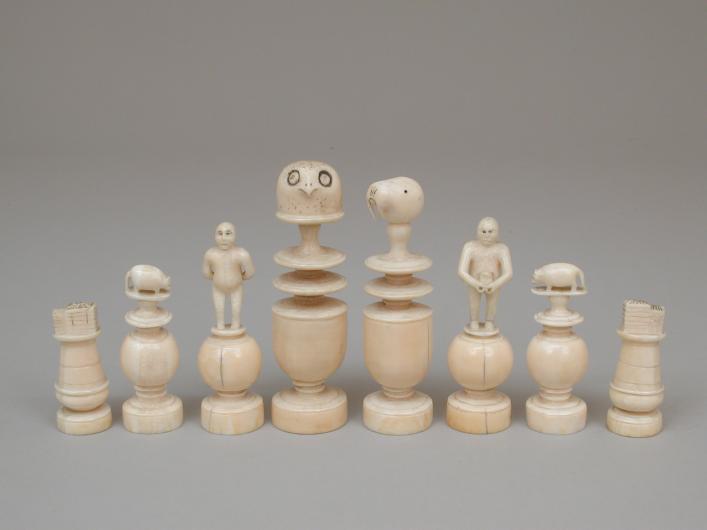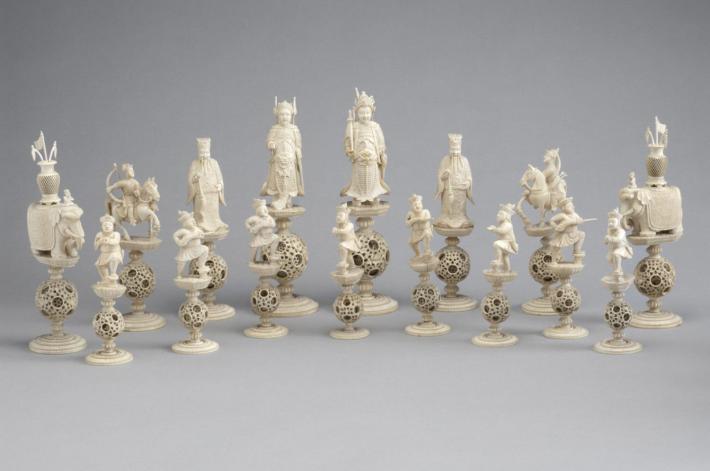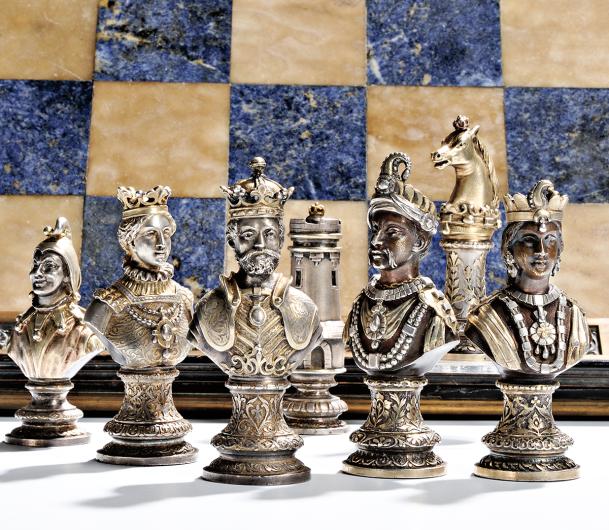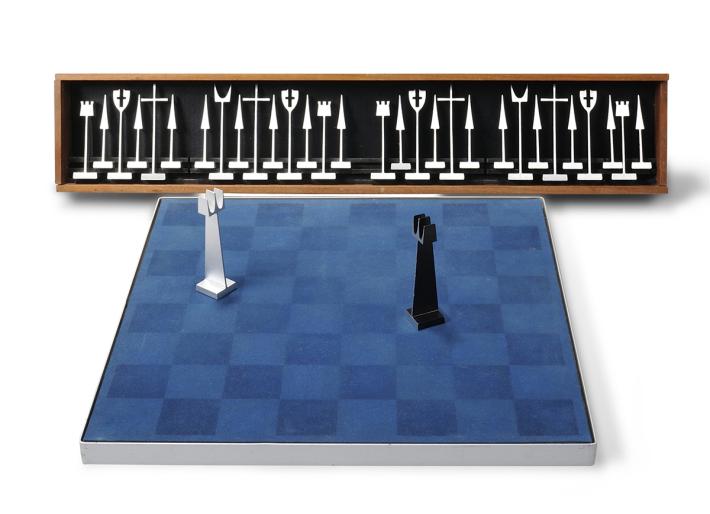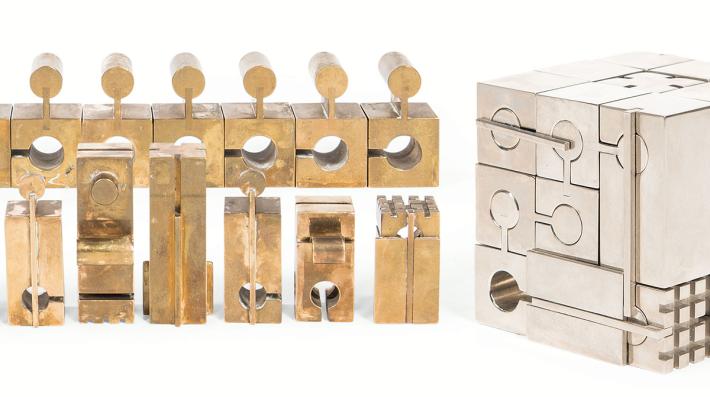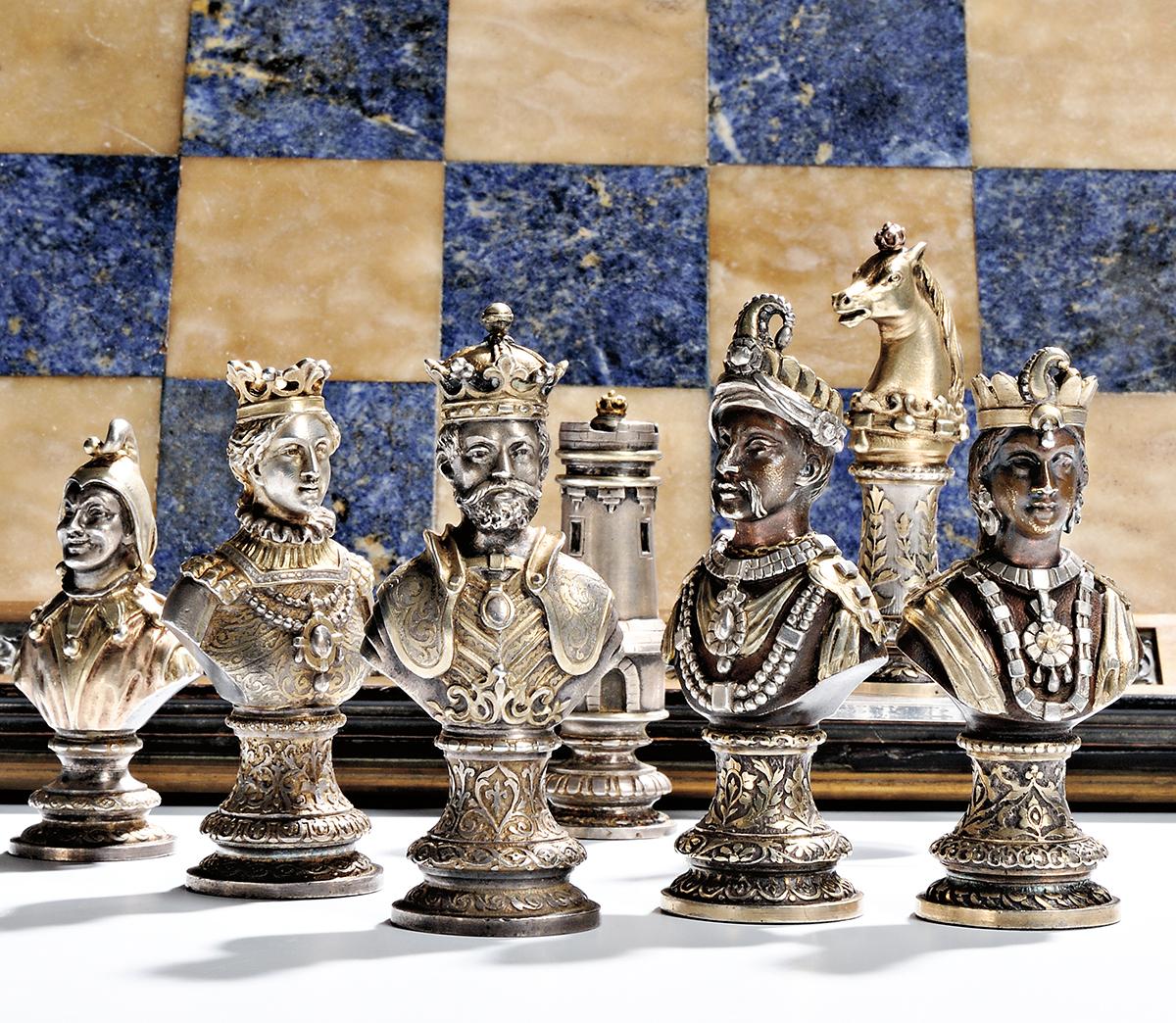
Though the popularity of chess has seen a major uptick lately, the strategic game is no passing fad. A current shortage of chess sets resulting from the combination of the hit Netflix show The Queen’s Gambit and much of the world seeking new hobbies while staying at home speaks to the universal appeal of chess. Having evolved from the Indian game chaturaṅga around the sixth century, the thirty-two pieces and sixty-four squares have made their way to nearly every continent and culture in the intervening centuries.
Brought to Europe by Islamic traders in the ninth century, the game became immensely popular in the Middle Ages, where it was adapted to fit European social structures. With the advancement of global trade, a variety of chess sets from distant cultures, in styles and materials that reflected their origins, became available. Part of the fun of chess sets is that they can be made from innumerable materials, and their pieces can take similarly unlimited forms, creating an adaptable format that artisans can tailor to specific beliefs and aesthetics.
While the most common sets today are cheaply produced using plastic (and these still perform their duties just as well), there is a rich global history of chess sets worth exploring.




